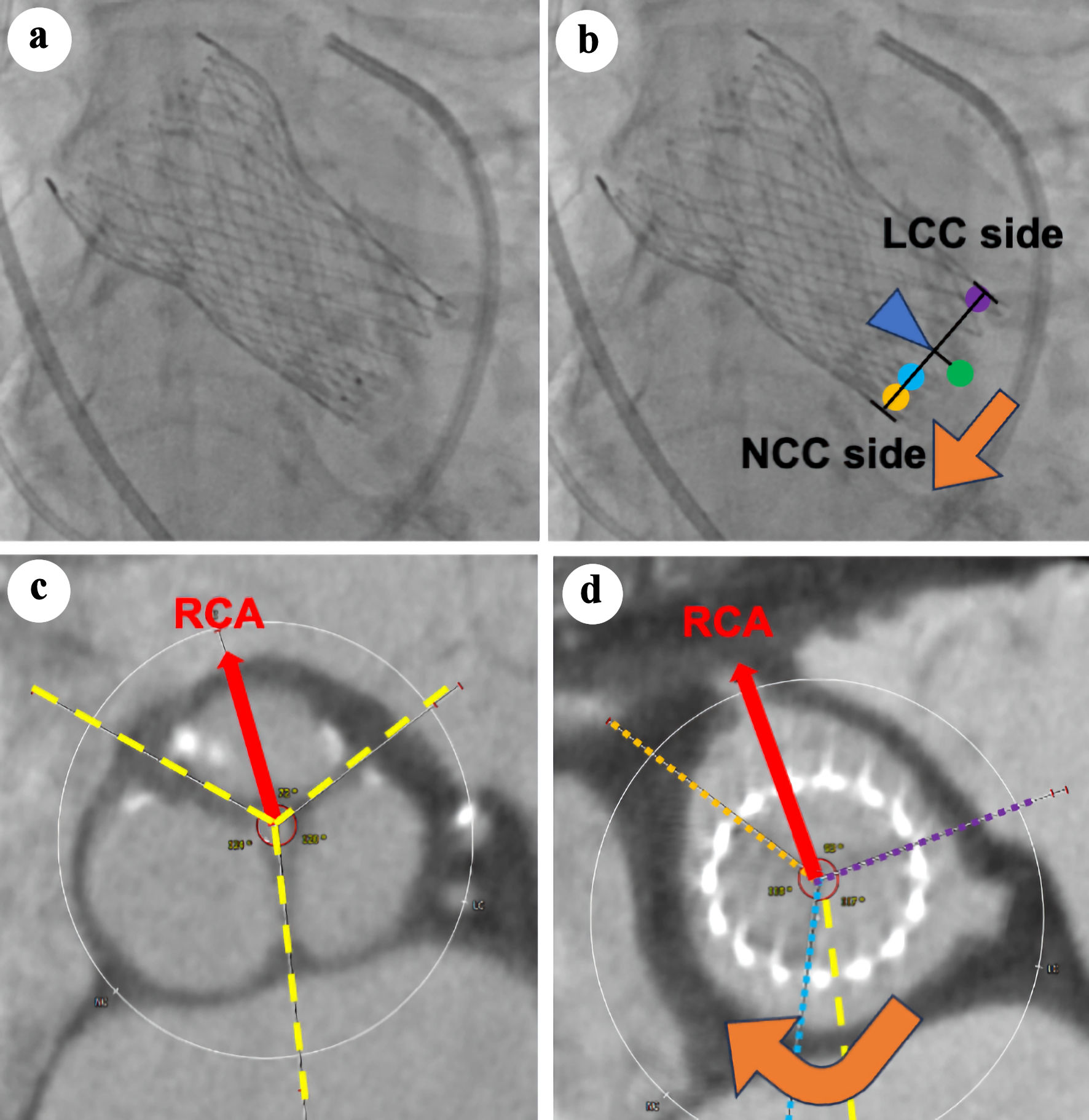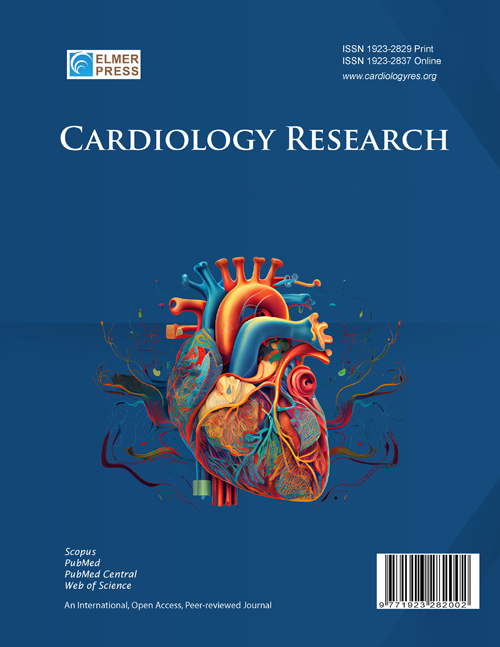Evaluation of Gold Marker Orientation in the Three-Cusp Coplanar View After Evolut FX Transcatheter Aortic Valve Implantation
DOI:
https://doi.org/10.14740/cr2124Keywords:
Commissure alignment, Gold marker, Aortic stenosis, Transcatheter aortic valve replacementAbstract
Background: Obtaining commissural alignment in transcatheter aortic valve replacement (TAVR) is important for ensuring coronary access and coronary artery filling, reducing the risk of central leaks, and minimizing leaflet stress. The Evolut FX system has the gold markers placed at the neo-commissures and has demonstrated favorable outcomes. We investigated whether evaluating the orientation of the gold markers in a three-cusp coplanar view (3-CV) after Evolut FX implantation was useful for assessing commissural misalignment (CMA).
Methods: Between April 2023 and December 2024, we included 25 patients who underwent transfemoral TAVR using the Evolut FX for symptomatic severe aortic stenosis. All patients underwent multidetector computed tomography (CT) after TAVR. The native-prosthetic gap (NPG) was defined as the distance between the center of the transcatheter heart valve stent frame and the central gold marker in a 3-CV. We evaluated the association between the NPG and CMA, which was derived from the average misalignment deviation on post-TAVR CT.
Results: The median age was 84 years, 36% were male, and 8% had coronary artery disease. The implanting view was the cusp overlap view (COV) in 11 patients, the near-COV in 11 patients, and the left anterior oblique view in three patients. Of the 22 patients implanted using the COV or near-COV, the gold markers were positioned at “2 left-1 right” in 17 patients. The average misalignment deviation was 18.0° (commissural alignment: eight patients, mild CMA: 13 patients, moderate CMA: two patients, and severe CMA: two patients) and the median NPG was 0.11. In cases with commissural alignment and mild CMA, NPG showed a significant positive correlation with the average misalignment deviation (r = 0.68, P < 0.01), whereas in cases with moderate and severe CMA, the relationship was inverse (r = -0.38, P = 0.62). Further, in cases with commissural alignment and mild CMA, a clockwise misalignment occurred when the central marker was positioned closer to the non-coronary cusp side, while a counterclockwise misalignment was observed when positioned closer to the left-coronary cusp side.
Conclusions: Evaluating the orientation of the gold markers in a 3-CV after Evolut FX implantation is useful for assessing CMA.

Published
Issue
Section
License
Copyright (c) 2025 The authors

This work is licensed under a Creative Commons Attribution-NonCommercial 4.0 International License.










